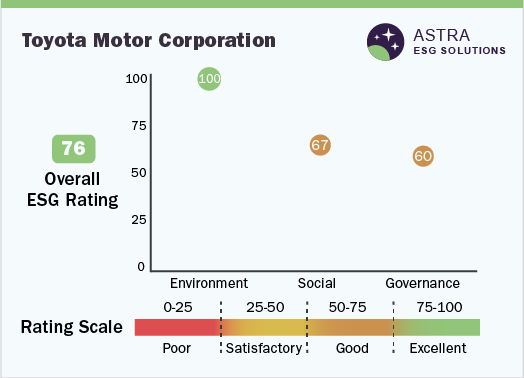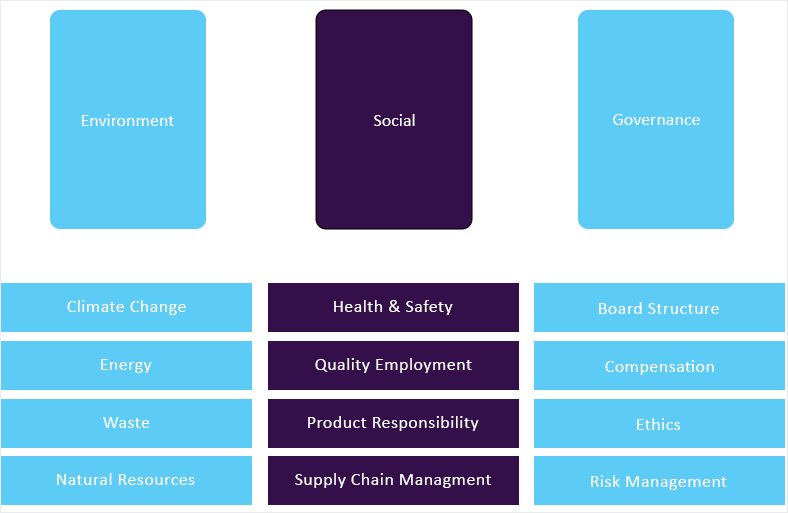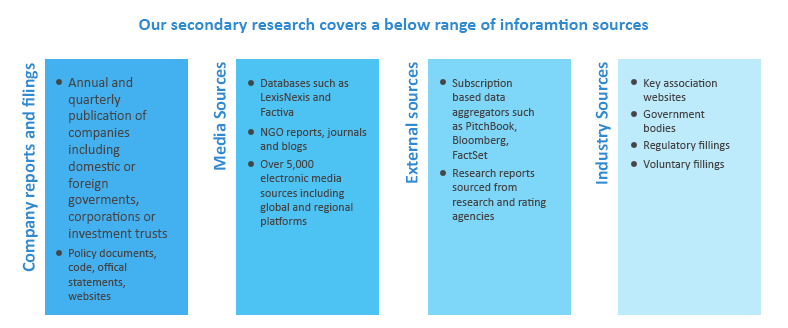Compliance, ESG Challenges & Framework, ESG Trends
- Report Summary
- Methodology
- Request for ESG Consultation
Environment, Social and Governance (ESG) at Toyota Motor Corporation
Toyota Motor Corporation has been focusing on sustainability due to effective due diligence and better investment decision for the company as well as relevant stakeholders. The company has agendas for addressing its update for progress in sustainability for which it aligns its operation and reporting to United Nations’ Sustainable Development Goals (UNSDGs). To achieve net zero emissions, the firm focuses on electrification strategy, managing product lifecycle by optimizing value chain, and creating infrastructure for mobility. The company also focuses on product innovation to reduce negative impact on the climate.
ESG Trends
Toyota Motor Corporation has been focusing on several trends in ESG especially in innovative space starting off with Shared and mobility services, during the pandemic, the growth of the sharing economy slowed as people moved around less or preferred private or personal transport. But the overall shift from ownership to user ship continues, and many customers are looking for affordable mobility alternatives. Connected automated vehicles are the next step which provides seamless experience and are designed to make roads safer for all. Toyota Australia is embracing the digital experience for customers, including by introducing always-available service and sales booking systems and other online services which can promote the achievement of UNSDG 13, climate action.

Electrification, Electric vehicles are not only a lower carbon mobility solution; they can also act as an alternative energy source during times of peak demand. Toyota Australia has a number of strategic partnerships in place to advance development of the infrastructure needed. While we work towards an electrified future, we believe that hybrid vehicles are currently the most accessible low-emissions option for many customers.
The company reports its progress in achieving UNSDG’s, as they have been working towards achieving net carbon zero with electrification strategy, moving towards setting science-based emission targets and using them to inform vehicle development, sales targets and operations. The company is also carrying out research and creating partnerships to develop a hydrogen future as well as Using marketing and advocacy (for example with the Federal Chamber of Automotive Industries (FCAI)) to accelerate de-carbonization. Creating infrastructure for mobility as there is a transition to a mobility company, they have been forming public and private partnerships to design sustainable transport systems. Developing shared mobility solutions and Advocating for, and supporting, stronger fuel standards.
Future of ESG in Toyota Motor Corporation
In 2021 the Toyota Motor Corporation has generated an amount of USD 245 billion. Company envisions various aspects including sustainability as one of the main agenda, with promising innovation and product development side supporting sustainability, company have a favorable future ahead.
Research methodology
Grand View Research (GVR) employs a holistic and robust research methodology focused on delivering precision. Our ESG key issues are selected following a thorough materiality analysis run by our taxonomy committee. We examine leading business journals relevant to the industry sector and where applicable references are made to a range of sources including regulatory agencies, trade associations, company filings, white papers, and analyst reports during the due diligence on data aggregation. In addition, a recurring theme that remains central to all our research reports remains data triangulation which aims to dive into the market from thematic context, regulation, and industry benchmarking, including SWOT analysis.
Eligibility Criteria and Company Selection
Each public company is curated by our senior researchers following a comprehensive study of their business involvement around a specific theme. The involvement extends to subsidiaries based on at least 50% holding by the parent company. Following this, we analyze fundamental financial indicators, including revenue and market capitalization to ensure a diverse set of companies that fairly represent the sector are included. Additionally, GVR researchers ensure the disclosure level of each company across the material ESG key issues.
Scoring Methodology
Each ESG metric is assigned a specific weight based on its relevance across sectors. Below are the aggregated weights across pillars, which are derived from each metric.
| Environment | Social | Governance |
| 40% | 30% | 30% |
GVR’s proprietary ESG score is calculated using a weighted average method at:
• Key issues level
• Pillar level
• Company level and,
• Theme level
Data Mining
Data is obtained and collated from diverse source points. The data collected is continuously cleansed to ensure that only validated and verifiable sources are analyzed. In addition, data is also mined from a large number of in-house syndicated research reports inventory as well as through paid databases and premium content. During this research report, we conducted multiple primary interviews across the globe supported by our Primary Research Panels through the delivery of a mix of paid and unpaid interviews. We also send and receive responses from a wide section of industry participants through a carefully crafted and comprehensive survey questionnaire. We triangulate these data into quant models and generate qualitative insights. Evolving industry dynamics that shape drivers, restraints, and pricing are also gathered. As a result, the published content includes proprietary data and meaningful insights.
Fundamental ESG data:
GVR’s ESG taxonomy committee maintains the framework and ensures it is updated quarterly considering market updates and relevance. Framework includes 65+ fundamental ESG metrics that are identified following a thorough materiality assessment. Below is GVR’s ESG Level-I framework:

Alternative ESG data:
GVR also analyzes macro-economic factors that impact or drive the growth of respective sectors. This includes
• Deep dive analysis of policy and regulatory landscape that has potential towards shaping the future of businesses
• Innovation quotient of a sector to gauge prospective evolution of a theme and related opportunities
• Investment scenario, including mergers & acquisition, funding and other deals to assess the investment appetite for a particular theme
• Other market activities, including market size, growth forecasts among others.
Information sources



